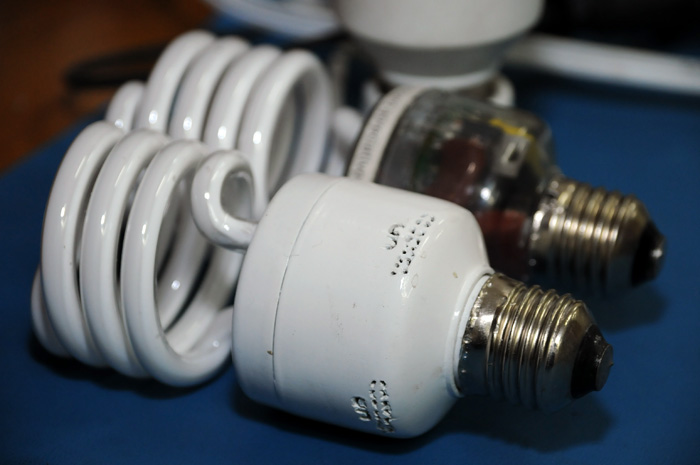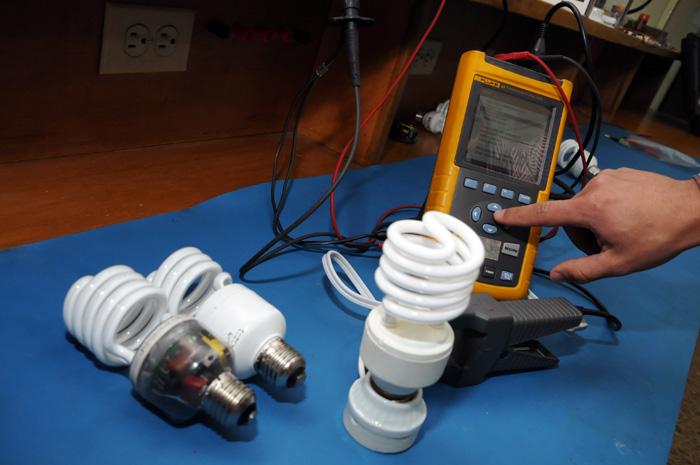For fluorescent compacted light bulbs to work, alter energy of the electric grid has to pass through an electronic ballast or card (that acts as an interface between the source of energy and the bulb) to be changed into continuous energy, however, in this process, a percentage of energy is wasted or distorted.
On the contrary, explains Jorge Leal, coordinator of the research group in Power Electronics of Universidad Nacional de Colombia "the light bulbs with the electronic ballast that we developed do not produce harmonic distortion since this card counts on a correction system for power effects.
In this regard, this corrective mechanism takes the input current waveforms (from the electric grid) and transmits them to the light bulb in the same manner and voltage phase (without energy distortions) increasing efficiency.
The concept of efficiency is based on the amount of energy delivered or absorbed by an element in a determined time; therefore, with this new design, these lamps provide an 88% performance in comparison to a 70% performance of lamps with traditional ballast.
Leal asserted that the advantages this modification brings to energy companies are several. "This development allows reducing the generation of substations since it prevents eclectic waste in the process of electricity distribution."
The research group expects to produce 240 light bulbs with this new technology in order to generate a massive implementation and enter in the market.
The development of this proposal took one year and was supported by Empresa de Energía de Bogotá (Codensa) and Universidad Nacional de Colombia.
 Correo Electrónico
Correo Electrónico
 DNINFOA - SIA
DNINFOA - SIA
 Bibliotecas
Bibliotecas
 Convocatorias
Convocatorias
 Identidad UNAL
Identidad UNAL





